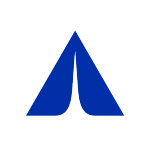My piston engineering apprenticeship started with large bore high output 2-stroke pistons back in the mid 1980’s. It turned out to be one of the most challenging piston applications I would see so it was a great learning opportunity and like all piston engineers I learned a few important lessons. First of all, I learned that everyone who works on pistons has a fair amount of scar tissue on their butts from learning the hard way and that school of hard knocks created an experience base that was a big part of the “technology”. This experience base was interpreted by others as the “art” of piston design because there are so many complex interactions between the piston and the other engine systems that the physics are not easily understood. Secondly, I learned that every time a piston fails, the laws of physic are actually being followed and there was a need to create a proper blend of experience (art) and science in order to design and develop a successful piston.
Pistons must be designed AND developed because it’s impossible to design a piston that works at its optimum potential without some development to let the engine indicate what it really needs from the piston and in some cases to let the piston indicate what it really needs from the engine. Design guidelines at their best can get you started with something that might run OK, but if you stop at that point you’re accepting mediocrity and are leaving openings for others to beat you. Every system is unique and requires a comprehensive approach to learn what is required to allow the piston to perform at its full potential and that is what we do. None of our products are a simple copy of an OEM part because we know our customers are looking for something better. We start with our best shot based on our experience and work with our customers to optimize our products around their specific applications. Our piston designs start in the virtual environment as a solid model in the computer. We use finite element modeling (FEA) to analyze the piston stress distributions from the most extreme load cases expected in order to get a proper balance of strength and weight. The analysis itself is pure science but the art comes from picking the proper load cases and knowing when to believe the theory and when to let experience override it. Analysis is a great tool to understand what counts and what doesn’t and helps us see complex interactions we could not see otherwise, but if we were to let it completely dominate the design process, we would fall short because at the end of the day, the real truth comes from the engine and that is where we place the most trust. The large bore 2-strokes forced us to develop some unique experimental approaches to let the engine tell us what it needs from the piston and to take a total system approach to insure the engine design creates a solid foundation for the piston. We use experimental results to develop and confirm analytical techniques that complement the experimental work. We continue to refine our analytical and experimental approaches as old applications change and new applications are encountered. Our customers never stop improving their engines and we never stop improving our products so our designs are continuously evolving to keep up with the needs of our customers.





